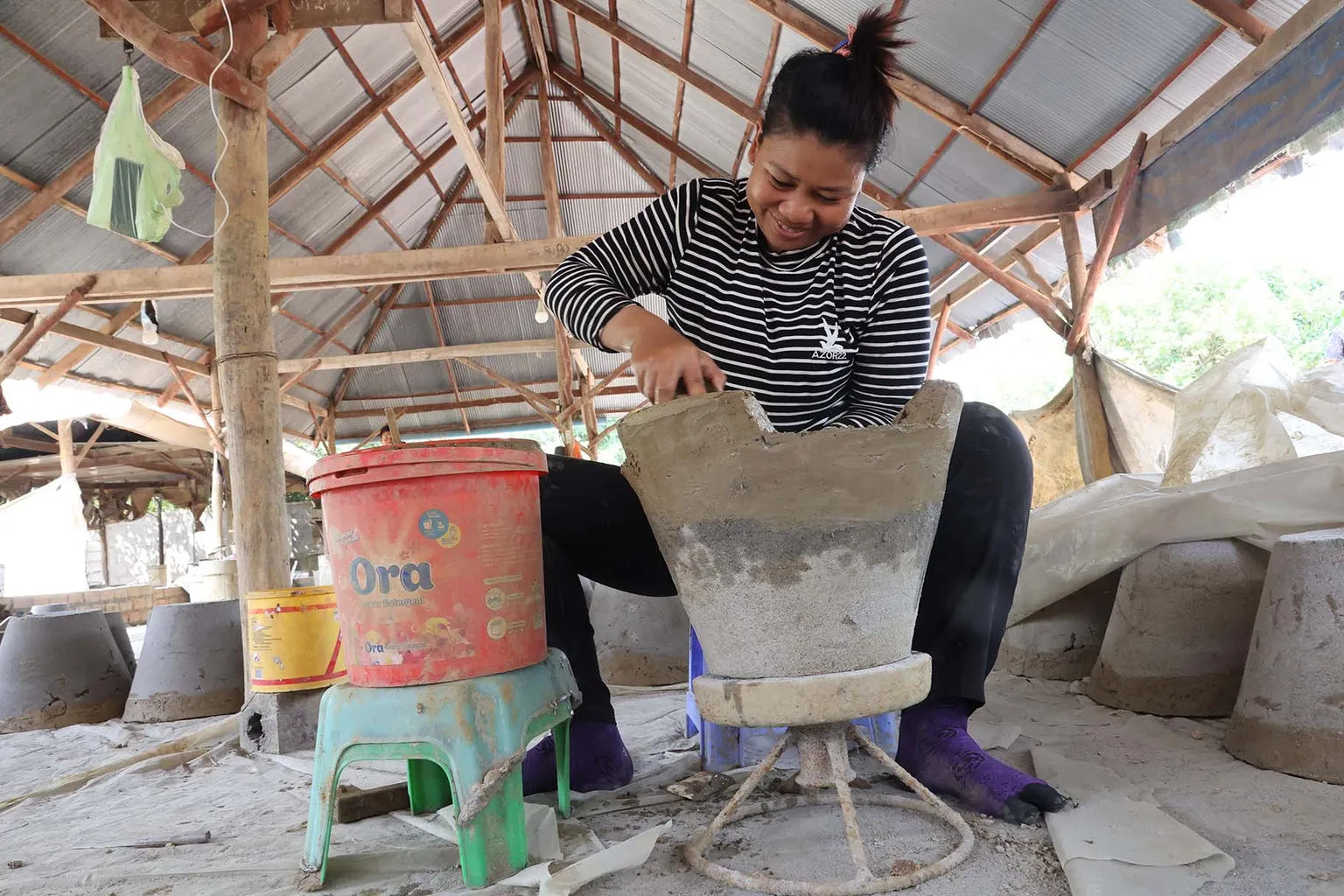Improved Cooking By Carbon Credits
Cambodia,Lao PDR,
concluded

The project produced and delivered over 100,000 improved cookstoves (ICS) to households in remote rural parts of Cambodia, between January 2022 and June 2024.
The Improved Cooking by Carbon Credits project was a 3-year initiative to design and produce a fuel-efficient ceramic cookstove to reduce firewood and thus mitigate greenhouse gas emissions and improve livelihoods. The project extended SNV's decades-long experience in promoting clean-cooking energy solutions.

Producing cookstoves

Every month, about 2,500 Naga stoves are produced
Our approach to improved cooking
In collaboration with the biomass energy laboratory at the Institute of Technology of Cambodia, SNV developed an appropriate, fuel-efficient stove design. The Naga cookstove has an efficiency of 36% and lasts for three years. After training and testing the stove design, it went into production.
In partnership with the Association of Cookstove Producers—CESPA—25 local producers and over 100 workers in Kampong Chhnang province received production training. By the end of the project, these producers had manufactured over 100,000 high-quality improved cookstoves.
These fuel-efficient Naga cookstoves replaced inefficient, traditional cookstoves for households living in remote parts of Cambodia, where open fires are still common. Reducing firewood use is important, as burning biomass for cooking adds to the greenhouse gases responsible for climate change; the smoke poses significant health risks, and wood collection impacts livelihoods.
Project results
Developed a highly fuel-efficient and durable ceramic cookstove design named Naga meets the cooking energy needs of households in rural Cambodia.
25 producers with over 100 workers received technical production training and better income opportunities.
CESPA developed into a professional and legal institution and can now manage projects independently.
Over 100,000 households benefited from reduced needs for firewood and associated co-benefits.
